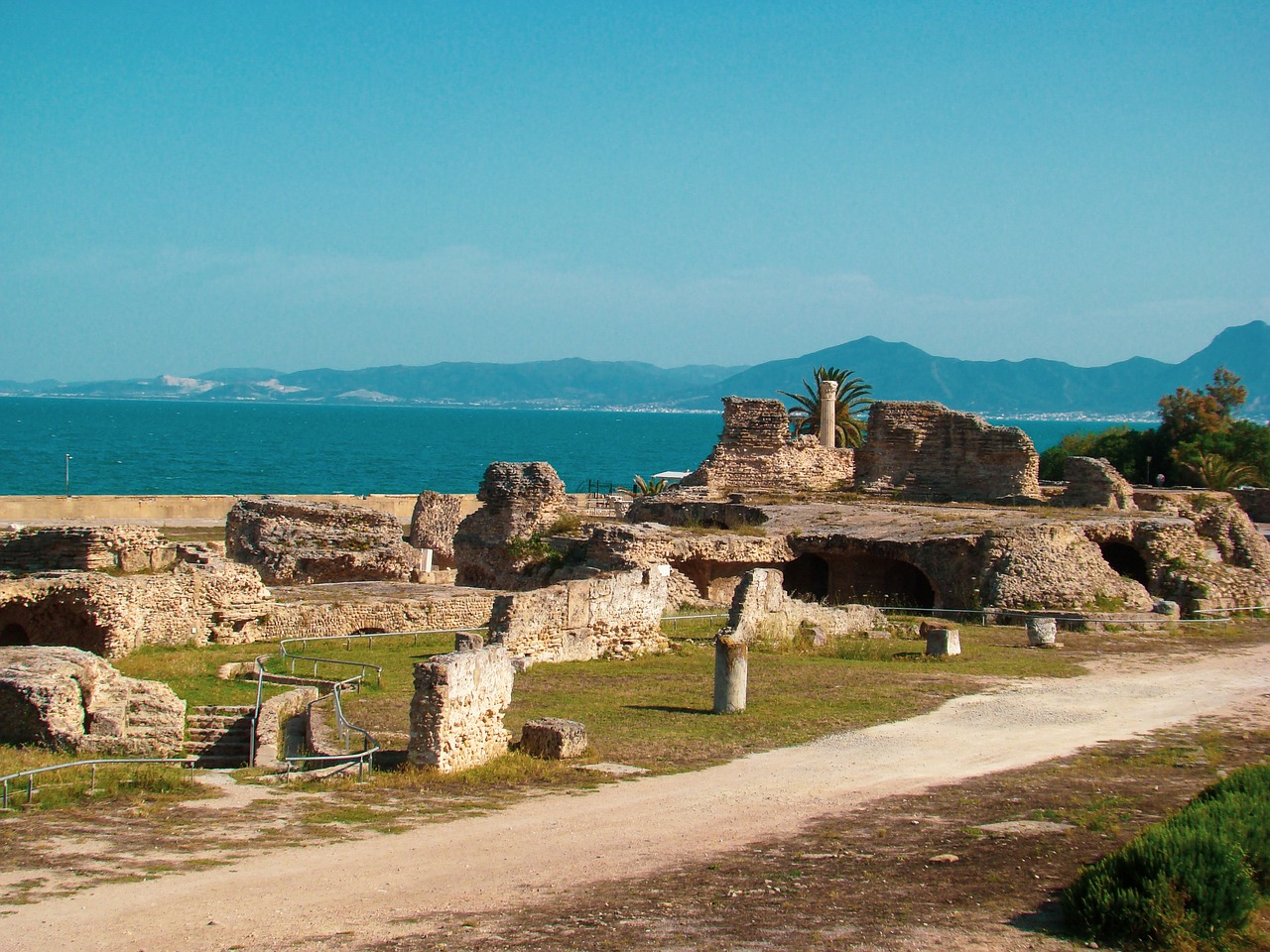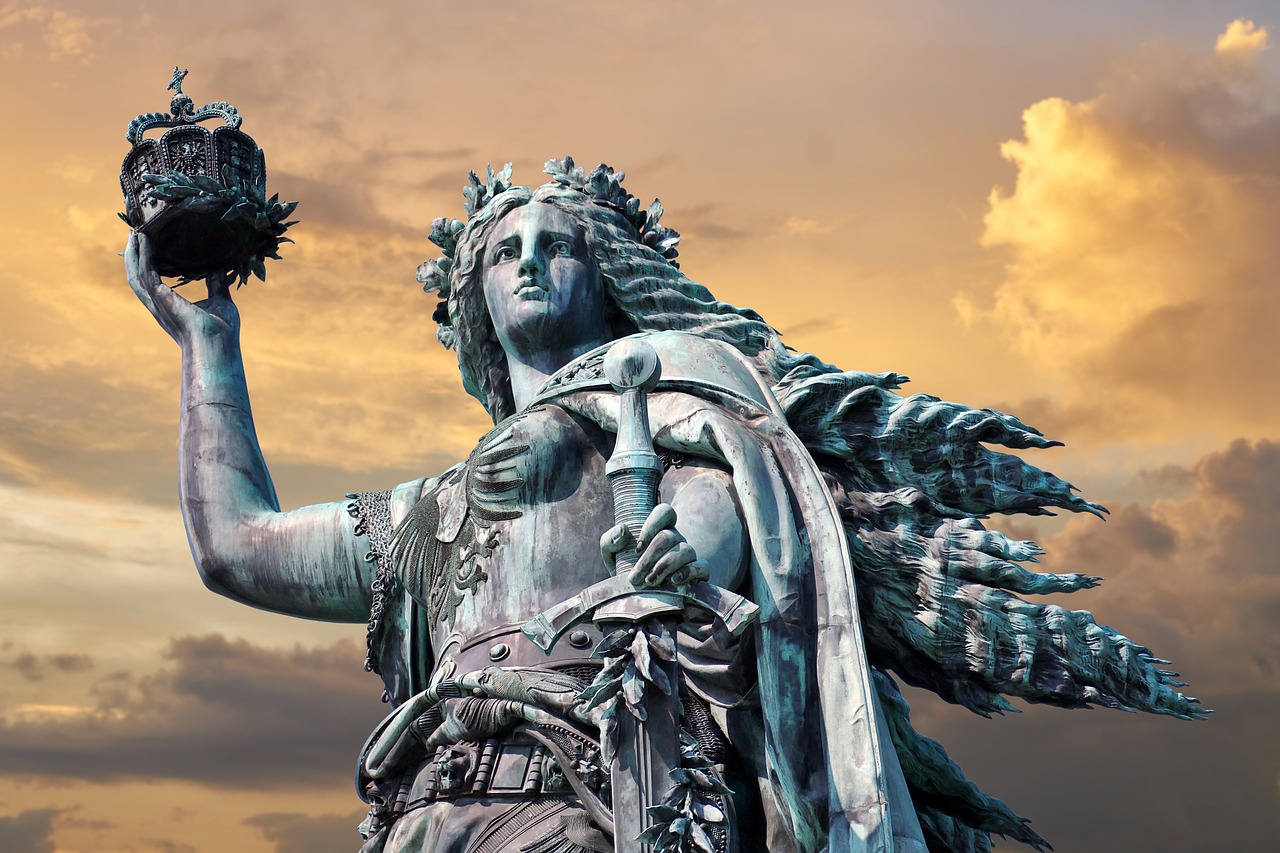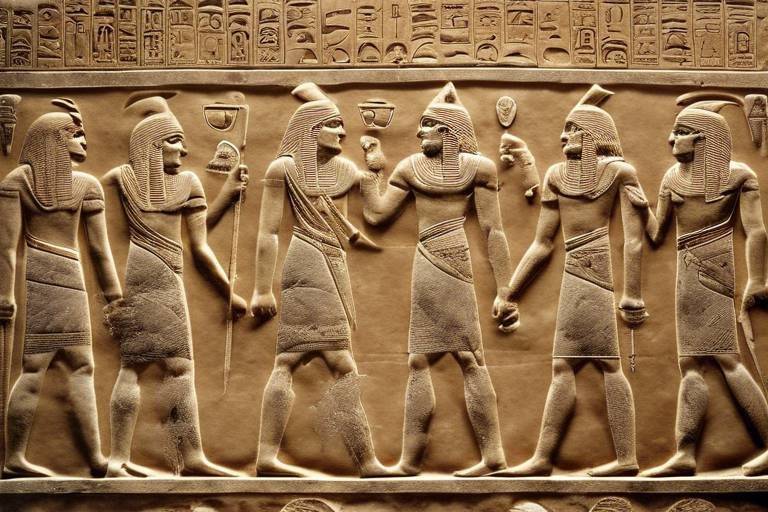The Influence of the Carthaginian Empire on Mediterranean Trade
The Carthaginian Empire exerted a profound influence on Mediterranean trade, shaping the economic landscape of the ancient world through its commercial prowess and naval dominance. Carthage, a city-state founded by the Phoenicians, emerged as a maritime power strategically positioned to control key trade routes in the Mediterranean region. Its strategic location enabled Carthage to establish trade networks that extended far and wide, connecting it with various civilizations and facilitating the exchange of goods across the sea.
One of the cornerstones of Carthaginian trade was its well-developed ports, including the bustling hub of Carthage itself, along with ports like Utica and Leptis Magna. These ports played a crucial role in facilitating the flow of goods, serving as vital hubs for commerce and trade activities. The Carthaginian merchant fleet, known for its efficiency and capabilities, was instrumental in transporting goods across the Mediterranean and maintaining the intricate web of trade routes established by Carthage.
However, the prosperity and dominance of Carthage in Mediterranean trade were not without challenges. Rivalries and conflicts with other powers in the region, most notably Rome, led to periods of intense competition and warfare. The Punic Wars, a series of conflicts between Carthage and Rome, particularly the First and Second Punic Wars, resulted in significant disruptions to Carthaginian trade and ultimately contributed to the decline of the empire.
Despite its eventual downfall, the legacy of Carthaginian trade practices endured, leaving a lasting impact on subsequent civilizations. The influence of Carthage could be seen in the trade routes and economic policies of the Roman Empire, which adopted and built upon many of the commercial practices pioneered by the Carthaginians. The evolution of Mediterranean commerce was shaped significantly by the innovations and strategies developed by Carthage, underscoring the enduring legacy of this ancient empire on the trade dynamics of the region.

Origins of Carthage
Exploring the impact of Carthage's commercial prowess and naval dominance on the trade routes and economic landscape of the Mediterranean region during ancient times.
Carthage, a powerful ancient city-state located in present-day Tunisia, had humble beginnings that date back to the 9th century BC. Founded by Phoenician settlers from the city of Tyre, Carthage quickly grew into a major maritime power due to its strategic location on the North African coast. Situated along vital trade routes, Carthage became a hub for commerce and a key player in Mediterranean trade.
The rise of Carthage as a dominant force in the region can be attributed to its skilled seafarers and astute leadership. The city's proximity to important resources like timber and silver, coupled with its well-organized government and military, enabled it to expand its influence and control over trade networks.
Carthage's strategic location on the Gulf of Tunis provided easy access to the Mediterranean Sea, allowing it to establish strong maritime connections with other civilizations such as Greece, Egypt, and the Etruscans. This geographical advantage played a crucial role in the city's economic prosperity and rise to prominence as a major trading power.
Carthage's economic strength was built on the foundation of extensive trade networks that spanned across the Mediterranean region. Through strategic alliances and commercial agreements with neighboring states and distant lands, Carthage facilitated the exchange of goods such as textiles, pottery, precious metals, and agricultural products.
The city's merchant fleet, comprised of well-equipped ships and skilled sailors, navigated the seas to transport commodities to and from Carthage's bustling ports. These ports, including the main harbor of Carthage itself, Utica, and Leptis Magna, served as vital hubs for trade, attracting merchants and traders from far and wide.
Despite its economic prosperity, Carthage faced fierce competition and conflicts with rival powers in the Mediterranean, most notably the rising Roman Republic. The rivalry between Carthage and Rome culminated in a series of devastating wars known as the Punic Wars, which had far-reaching consequences for both civilizations.
The First Punic War, fought over control of Sicily and maritime dominance, marked the beginning of hostilities between Carthage and Rome. Subsequent conflicts, including the Second Punic War led by the Carthaginian general Hannibal, further strained trade relations and disrupted the flow of goods across the Mediterranean.
Despite its eventual defeat in the Punic Wars and the destruction of Carthage in 146 BC, the legacy of Carthaginian trade practices endured and influenced subsequent civilizations. The Romans, in particular, adopted and adapted many of Carthage's commercial strategies, incorporating them into their own trade networks and economic policies.
Carthage's emphasis on maritime trade, the establishment of efficient ports, and the development of a strong merchant fleet left a lasting impact on the Mediterranean economy. The city's legacy served as a blueprint for future trading powers, shaping the evolution of commerce in the region for centuries to come.
- What was the significance of Carthage's location in its rise to power?
- How did the Punic Wars impact Mediterranean trade?
- What aspects of Carthaginian trade practices were adopted by the Romans?

Carthaginian Trade Networks
Exploring the impact of Carthage's commercial prowess and naval dominance on the trade routes and economic landscape of the Mediterranean region during ancient times.
Delving into the founding of Carthage, its rise as a maritime power, and the strategic location that enabled it to control key trade routes.
The Carthaginian trade networks were a web of interconnected routes that spanned across the Mediterranean, solidifying Carthage's position as a dominant force in ancient commerce. These networks were not just about the physical movement of goods but also about the exchange of ideas, culture, and technology.
Carthage established trade partnerships with various civilizations, including the Greeks, Etruscans, and Phoenicians, allowing for the exchange of a wide array of goods such as textiles, metals, pottery, and agricultural products. Through these networks, Carthage became a hub for the distribution of goods throughout the Mediterranean region.
Highlighting the significance of Carthage's well-developed ports, such as Carthage itself, Utica, and Leptis Magna, in facilitating trade and commerce. These ports served as vital hubs for the exchange of goods, connecting Carthage to distant lands and enabling the empire to control trade routes effectively.
Exploring the composition and capabilities of the Carthaginian merchant fleet, which played a crucial role in transporting goods and maintaining trade routes. The fleet consisted of swift and sturdy vessels that could navigate the Mediterranean waters with ease, ensuring the smooth flow of trade between Carthage and its trading partners.
Discussing the conflicts and rivalries that arose between Carthage and other powers in the region, such as Rome, and their impact on Mediterranean trade. These power struggles often led to disruptions in trade routes, affecting the flow of goods and wealth in the region.
Analyzing how the Punic Wars, particularly the First and Second Punic Wars, disrupted Carthaginian trade and ultimately led to the empire's decline. The devastating effects of these wars not only weakened Carthage's economic power but also reshaped the geopolitical landscape of the Mediterranean.
Exploring the enduring legacy of Carthaginian trade practices, including their influence on subsequent civilizations and the evolution of Mediterranean commerce. Carthage's innovative trade practices, such as the use of standardized weights and measures, left a lasting impact on trade systems that followed.
Investigating how Carthaginian trade practices and infrastructure influenced Roman trade routes, economic policies, and the overall prosperity of the Roman Empire. The assimilation of Carthaginian trade practices into Roman commerce contributed to the economic growth and stability of the Roman Empire.

Importance of Carthaginian Ports
The Carthaginian ports held a pivotal role in the empire's dominance of Mediterranean trade. Situated strategically along the North African coast, these ports served as bustling hubs for the exchange of goods and commodities across the region. Carthage itself, the primary port, stood as a beacon of maritime commerce, welcoming merchant vessels from distant lands laden with treasures.
Utica, another significant port under Carthaginian control, facilitated trade with the interior regions, acting as a gateway for goods flowing in and out of the empire. Its proximity to fertile lands and valuable resources made it a crucial link in the trade network, ensuring a steady supply of agricultural products and raw materials.
Leptis Magna, although not as prominent as Carthage or Utica, played a vital role in the Carthaginian trade network. Located further to the east, this port connected Carthage to regions rich in exotic goods and spices, expanding the empire's reach and influence in the Mediterranean.
The well-developed infrastructure of these ports, including docks, warehouses, and trading posts, streamlined the flow of goods and facilitated efficient maritime trade. Carthage's investment in port facilities not only boosted its own economy but also enhanced the overall prosperity of the Mediterranean region, attracting traders and merchants from far and wide.

Carthaginian Merchant Fleet
The was the backbone of Carthage's trade dominance in the ancient Mediterranean. Comprising a formidable array of vessels, ranging from swift biremes to sturdy triremes, the Carthaginian fleet was renowned for its efficiency and capacity. These ships were not merely vessels but lifelines connecting the rich markets of the eastern Mediterranean with the abundant resources of the western regions.
Carthage's maritime prowess was not limited to the sheer number of ships but extended to the expertise of its sailors and navigators. These skilled seafarers braved the unpredictable waters of the Mediterranean, navigating through treacherous straits and stormy seas to ensure the safe passage of valuable commodities. The was not just a means of transportation but a symbol of Carthage's commercial might and influence.
Moreover, the fleet played a crucial role in establishing and maintaining trade routes that spanned the length and breadth of the Mediterranean. From the bustling markets of Carthage to the remote outposts in Spain and Sicily, Carthaginian ships plied these routes, carrying exotic goods such as spices, silk, ivory, and precious metals. The fleet's reach was extensive, connecting distant lands and fostering cultural exchange and economic prosperity.
One of the key strengths of the lay in its adaptability and versatility. Whether transporting bulk commodities like grain and timber or luxury goods for the elite, Carthaginian ships were equipped to meet the diverse needs of trade. The fleet's ability to pivot between different markets and commodities ensured its resilience in the face of changing economic landscapes and geopolitical challenges.
However, the success of the was not without its challenges. Rival powers, such as Rome, sought to undermine Carthage's dominance at sea, leading to fierce naval conflicts that tested the mettle of Carthaginian sailors. Despite facing formidable adversaries, the fleet stood as a testament to Carthage's enduring commitment to trade and commerce, cementing its legacy as a maritime power of antiquity.

Conflict and Competition in the Mediterranean
Conflict and Competition in the Mediterranean were defining features of the ancient world, with power struggles shaping the course of history. Carthage, as a dominant force in maritime trade, often found itself embroiled in conflicts with rival powers vying for control of lucrative trade routes. The rivalry between Carthage and Rome, in particular, escalated into a series of devastating wars that reshaped the political and economic landscape of the Mediterranean.
These conflicts were not merely battles for supremacy but were also economic struggles, with control over trade routes and access to resources playing a crucial role. The competition for dominance in the Mediterranean was fierce, with each power seeking to expand its influence and secure its economic interests. The clash of civilizations in the Mediterranean was akin to a high-stakes game, where the victor would not only gain territorial control but also command over lucrative trade networks.
The Punic Wars, especially the First and Second Punic Wars, were pivotal moments in the history of Mediterranean trade. These conflicts not only resulted in significant loss of life and resources but also disrupted the established trade networks that had been crucial for the prosperity of Carthage. The repercussions of these wars reverberated throughout the region, leading to power shifts and economic instability.
Amidst the chaos of conflict and competition, the Mediterranean became a battleground where empires clashed and alliances shifted. The struggle for dominance was not only about military might but also about economic supremacy, with trade routes serving as arteries of wealth and power. Carthage's commercial prowess was put to the ultimate test as it fought to maintain its position in the face of relentless competition.

Punic Wars and Trade Disruption
The Punic Wars were a series of conflicts between the powerful city-states of Carthage and Rome that had a profound impact on Mediterranean trade. These wars, particularly the First and Second Punic Wars, resulted in significant disruptions to Carthaginian trade routes and commerce, ultimately leading to the decline of the Carthaginian Empire.
During the First Punic War, which lasted from 264 to 241 BC, Carthage faced a formidable opponent in Rome. The conflict primarily revolved around control of Sicily, a strategic island in the Mediterranean that was crucial for trade routes. As a result of this war, Carthage suffered heavy losses in terms of both territory and resources, weakening its economic power and disrupting its trade networks.
The Second Punic War, spanning from 218 to 201 BC, is perhaps the most famous of the Punic Wars due to the legendary Carthaginian general Hannibal Barca. Hannibal's daring invasion of Italy, crossing the Alps with elephants, shocked the Roman Republic and posed a serious threat to its dominance. While Hannibal achieved notable victories on Roman soil, the war ultimately ended in defeat for Carthage.
These prolonged conflicts exacted a heavy toll on Carthage's merchant fleet and infrastructure, causing trade disruptions and economic instability. The loss of key territories and resources further weakened Carthage's position in the Mediterranean trade network, allowing Rome to emerge as the dominant power in the region.
As a result of the Punic Wars, Carthage was forced to cede territories, pay heavy reparations, and limit its naval capabilities, all of which had a lasting impact on its trade relations and economic prosperity. The once-thriving commercial empire of Carthage was significantly weakened, paving the way for the rise of Rome as the preeminent trading power in the Mediterranean.

Legacy of Carthaginian Trade Practices
Carthage's trade practices left a lasting impact on the Mediterranean region, shaping the economic landscape for centuries to come. The strategic approach to commerce adopted by the Carthaginians influenced trade routes, market dynamics, and business strategies of future civilizations. Their emphasis on maritime trade and establishment of extensive networks set a precedent for how trade was conducted in the ancient world.
One of the key legacies of Carthaginian trade practices was the development of sophisticated financial systems that facilitated transactions across vast distances. Carthage's use of currency, credit mechanisms, and banking institutions paved the way for more efficient and secure trade operations. This financial innovation contributed to the growth of commerce and the expansion of markets beyond local boundaries.
Furthermore, Carthage's focus on establishing long-term trade partnerships and alliances with various civilizations fostered a spirit of cooperation and mutual benefit in the Mediterranean region. The exchange of goods, technology, and ideas between Carthage and its trading partners enriched cultural interactions and stimulated economic growth.
The legacy of Carthaginian trade practices also influenced the development of trade routes and infrastructure in the Mediterranean. The construction of harbors, warehouses, and trading posts by the Carthaginians set a precedent for future maritime powers in terms of logistics and supply chain management. These infrastructural investments laid the foundation for sustained economic activity and prosperity in the region.
Moreover, the organizational structure of Carthaginian trade, characterized by specialized merchant guilds and regulatory bodies, established standards of professionalism and accountability in commercial dealings. This emphasis on fair trade practices and adherence to established norms contributed to the reputation of Carthaginian merchants as reliable and trustworthy partners in business.

Influence on Roman Trade and Economy
Carthage's influence on Roman trade and economy was profound and far-reaching, shaping the economic landscape of the Roman Empire in significant ways. The Carthaginian trade practices and infrastructure not only influenced the routes and volume of trade but also impacted the overall prosperity of Rome.
One key aspect of Carthaginian influence on Roman trade was the establishment of efficient trade routes and networks across the Mediterranean. Carthage's expertise in maritime trade and navigation influenced the Romans in developing their own sea trade routes, expanding their reach to distant lands and enhancing their commercial activities.
Moreover, the Carthaginian emphasis on the development of ports and harbors as vital trade hubs inspired the Romans to invest in port infrastructure, leading to the growth of coastal cities and facilitating the movement of goods within the empire. This strategic approach to maritime trade contributed to the economic prosperity of Rome and strengthened its position as a dominant trading power.
Additionally, the Carthaginian legacy in trade negotiations and commercial partnerships influenced Roman trade practices, encouraging the Romans to establish trade agreements with various regions and civilizations. These agreements not only boosted the flow of goods and resources but also fostered economic stability and cooperation among different territories under Roman rule.
Furthermore, the Carthaginian focus on the organization and regulation of trade activities inspired the Romans to develop efficient economic policies and systems to manage their growing commercial activities. The establishment of market regulations, currency standards, and trade laws reflected the influence of Carthaginian trade practices on the Roman economy, ensuring smooth transactions and fair business practices.
In conclusion, the Carthaginian Empire's impact on Roman trade and economy was instrumental in shaping the economic policies, trade routes, and commercial practices of the Roman Empire. The legacy of Carthaginian trade practices continued to influence Roman economic development and contributed to the prosperity and stability of the empire.
Frequently Asked Questions
- What were the key factors that contributed to Carthage's rise as a maritime power?
Carthage's strategic location, well-developed ports, and strong merchant fleet were key factors that contributed to its rise as a maritime power. The city's location on the North African coast provided easy access to key trade routes in the Mediterranean, while its ports like Carthage, Utica, and Leptis Magna facilitated trade with other civilizations.
- How did the Punic Wars impact Carthaginian trade and economy?
The Punic Wars, especially the First and Second Punic Wars, had a significant impact on Carthaginian trade and economy. These conflicts with Rome led to disruptions in trade routes, loss of territories, and economic decline for Carthage. The wars ultimately weakened the empire and paved the way for its eventual downfall.
- What was the legacy of Carthaginian trade practices on subsequent civilizations?
The legacy of Carthaginian trade practices had a lasting impact on subsequent civilizations, particularly on Roman trade and economy. Carthage's influence on trade routes, infrastructure, and economic policies shaped the development of the Roman Empire and contributed to its prosperity. The practices of Carthage continued to influence Mediterranean commerce long after the empire's decline.



















